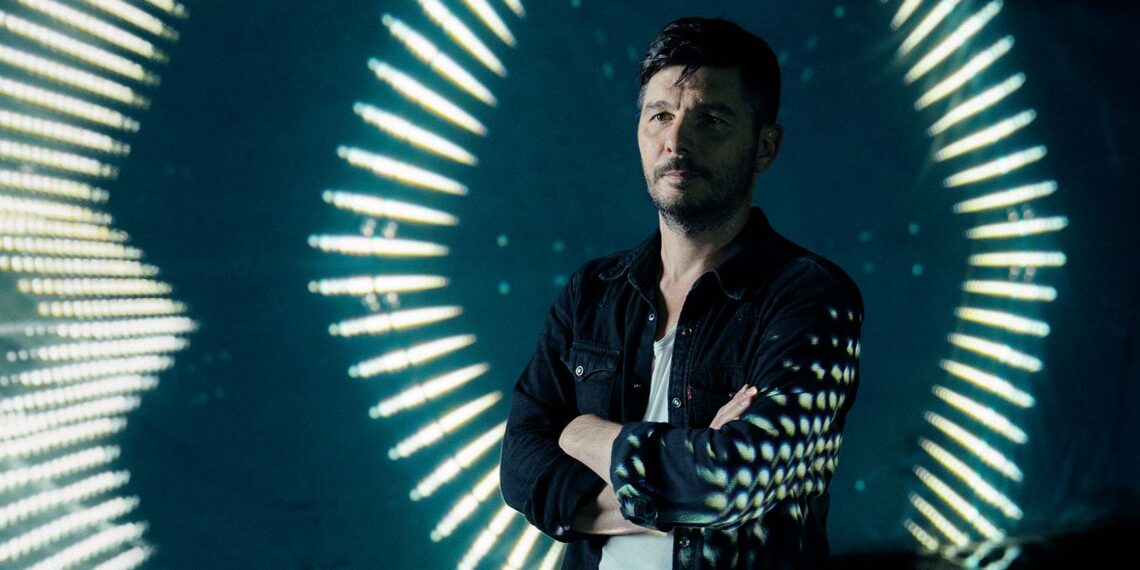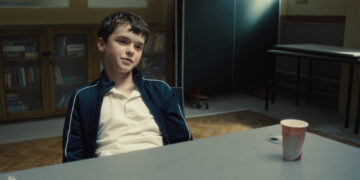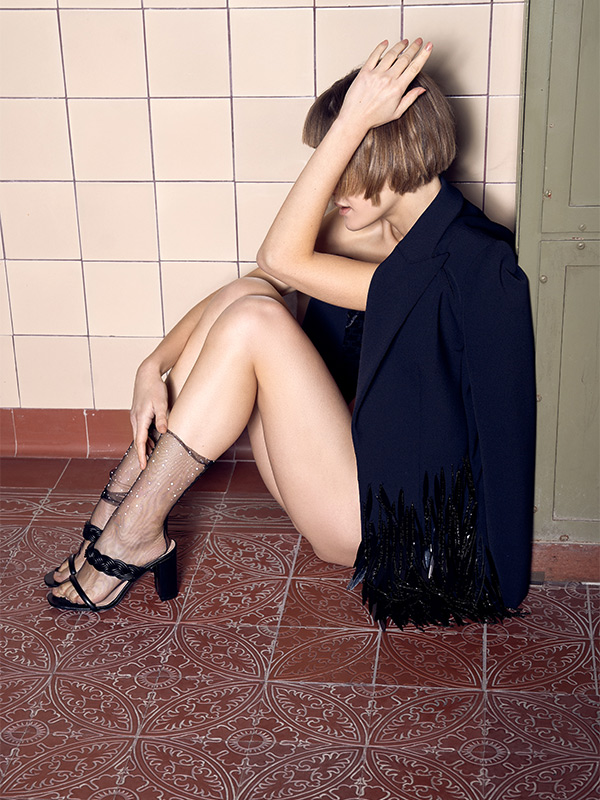French artist Guillaume Marmin has designed a sci-fi installation on the theme of space and time for the watch brand Jaeger-LeCoultre. “Passengers: Through Time” is like a time capsule. Is she too?
We take a walk in the desert – in the distance, dancing lights shine towards us. It is a portal with which it is possible to travel through space and time: The “Passengers: Through Time” installation is science fiction in real life and was designed by Guillaume Marmin for Jaeger-LeCoultre’s Stellar Odyssey collection. We thought about the infinite questions of the universe and asked the artist about his masterpiece.
FACES: At first sight of your artwork, one automatically thinks of a time capsule. Was that your idea and vision?
Guillaume Marmin: Science fiction was a very important source of inspiration for this project, especially the movie “2001: A Space Odyssey.” The design of the installation refers to the shape of the spaceship designed by Stanley Kubrick for this movie. I would say that the installation can be described as a space-time marker. It is designed to travel, it plays with the exhibition space, and its visual and acoustic content is constantly renewed over the course of the hours. Thus, its appearance is directly related to time and space.
F: What inspired you to create a work on such a complex subject as space and time?
GM: Originally there was the idea of the passage. The audience can walk through the work, even travel through it. But it is also a metaphor for life and our mortal state. We all travel through the world and explore a part of space and time.
Guillaume Marmin’s research
F: You spent a lot of time talking to astronomers and watchmakers to find out more about the connection between space and time. Which part of your research fascinated you the most?
GM: Perhaps the most fascinating thing is to imagine and understand that time and space are connected. It may seem abstract and difficult to imagine, but science proves that there is a connection. For example, you may have seen the images from the James Webb Space Telescope. Thanks to its far-sightedness, the telescope is able to look back 13.5 billion years, which is several hundred million years after the Big Bang. Unbelievable, isn’t it?
F: Was your goal with “Passengers: Through Time” to create an optical illusion?
GM: By using kaleidoscopic mirrors and multiple reflections, I wanted to play with visual cues. When we are in the installation, the floor and ceiling merge and reflect each other endlessly. The viewer’s body is also incorporated into this pictorial composition as part of the installation, which reminds us of stories about astral travel. It’s about creating a distance to your own body.
F: Why did you use sound effects for your project?
GM: The relationship between image and sound is an important theme in my work. I always try to create physical sensations by closely combining these two senses in the manner of synaesthetes. The painter Kandinsky, for example, was a synaesthete. For him, his paintings were scores in which every shape and every color was assigned to a musical instrument. This approach has always inspired me.
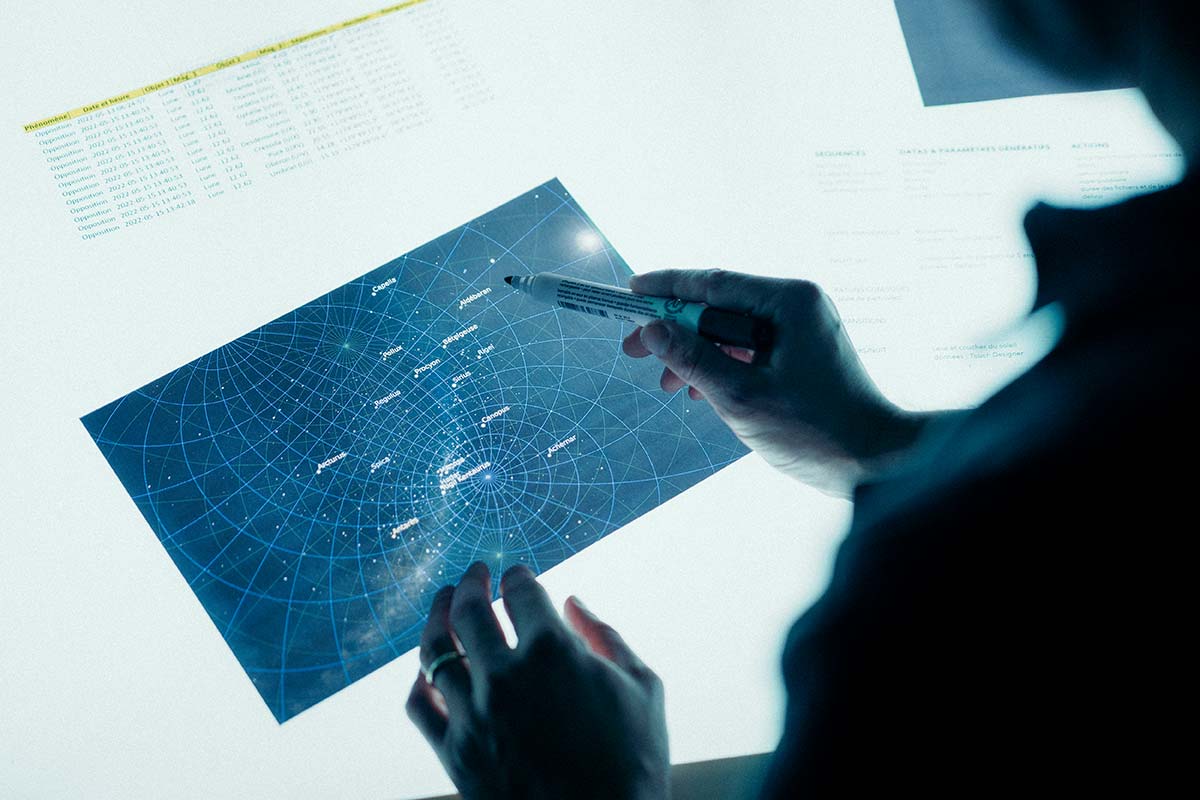
Collaboration with Jaeger-LeCoultre and specialists in their field
F: You designed “Passengers: Through Time” especially for Jaeger-LeCoultre. How difficult was it for you to create art under pressure?
GM: Thanks to the trust placed in me by Jaeger-LeCoultre, I made very good progress with the project. From the moment we agreed on the theme of time and space, it was actually quite easy to develop a concept that suited our shared worlds.
F: Did you work with electricians for the constellation? How should we imagine this?
GM: For this project, we worked with a whole team of specialists from various fields and sectors: Architects, builders, programmers and also electricians. We have managed to turn the idea into reality. The electronic maps, for example, were developed especially for this project. This is one of the advantages of the Internet, which allows us to share knowledge and bring skills together. When I started working 15 years ago, that wasn’t possible.
F: Albert Einstein invented the theory of relativity. Was this part of your research and inspiration?
GM: I’m not much of a scientist, and Einstein’s theories seem pretty complex to me. But it is unavoidable to deal with the theory of relativity when working with light, time and space. This gives this artistic project its depth. My aim is not merely to describe Einstein’s discoveries, but to stimulate the imagination on the basis of these considerations.
F: When you look up at the sky at night, do you recognize your installation?
GM: I’m not sure whether the installation really corresponds to the starry sky, although it does indeed adapt to the stars, such as the sun or the moon. The images and sounds in my installation, for example, are constantly modified according to their positions. You can think of it like our clocks and calendars, which are linked to the movements of the sun or the moon.
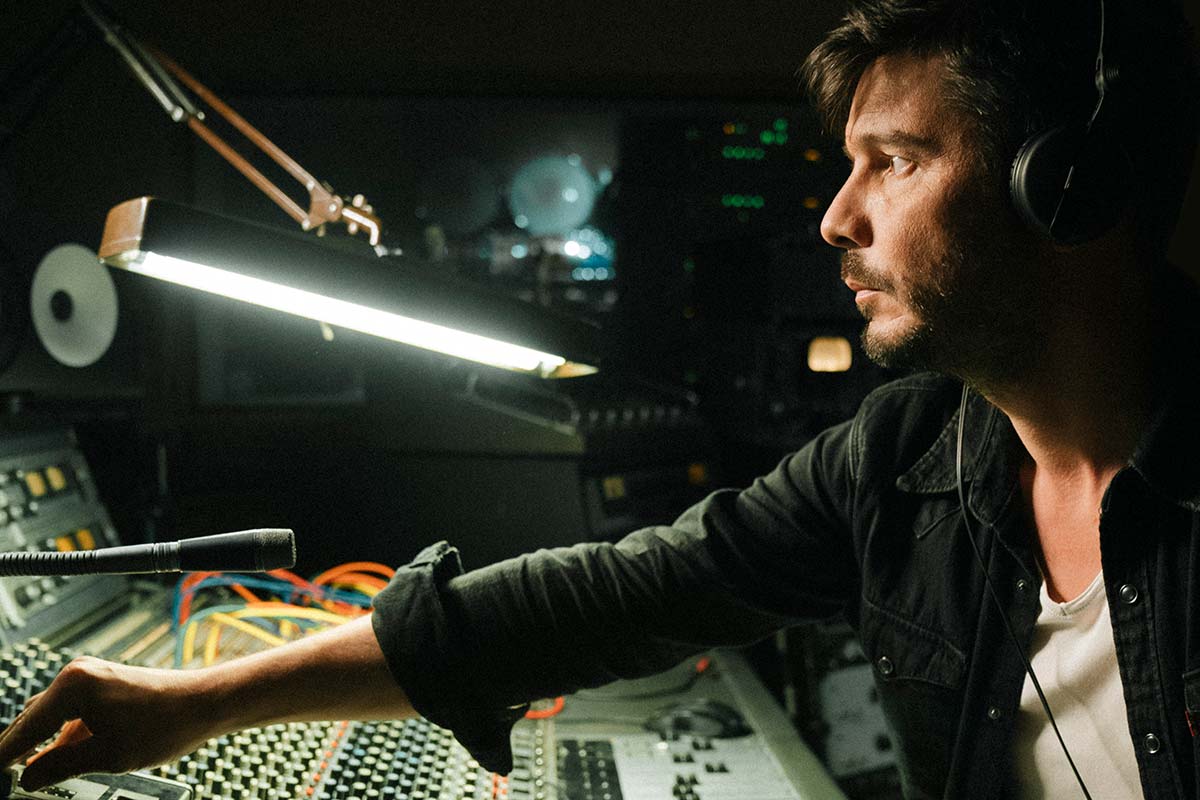
The fascination of time travel
F: There are so many movies about science fiction and time travel. Why are we humans so obsessed with space and time?
GM: Space and time are perhaps what life is all about.
F: Can art and science coexist?
GM: Of course: art and science coexist and even nourish each other. Progress and scientific discoveries always open up new horizons, although the opposite can also occur. Jules Verne, for example, spoke of technologies that did not even exist in his time and were only developed much later. He was therefore a true visionary who influenced science with his genius.
F: If you had the opportunity to travel in time, where would you be drawn to?
GM: That’s a difficult question. I would perhaps go back to the 60s, to the USA. I don’t think life was any easier back then, but it sounds like a euphoric time when young people managed to change society. This period was the birthplace of pop culture, which later influenced the whole world.
F: As part of this project, you asked yourself what time really is. Have you found an answer to this?
GM: No, I haven’t found an answer, but I have tried to understand the existing definitions. I realized something that I hadn’t understood before: there is more than one definition of time, and they are all flexible.
F: Do you wear a watch yourself?
GM: No, I’m always late! (laughs)
The installation “Passengers: Through Time” by Guillaume Marmin can be seen at numerous locations around the world as part of the “Stellar Odyssey” exhibition.
You can get a foretaste here:
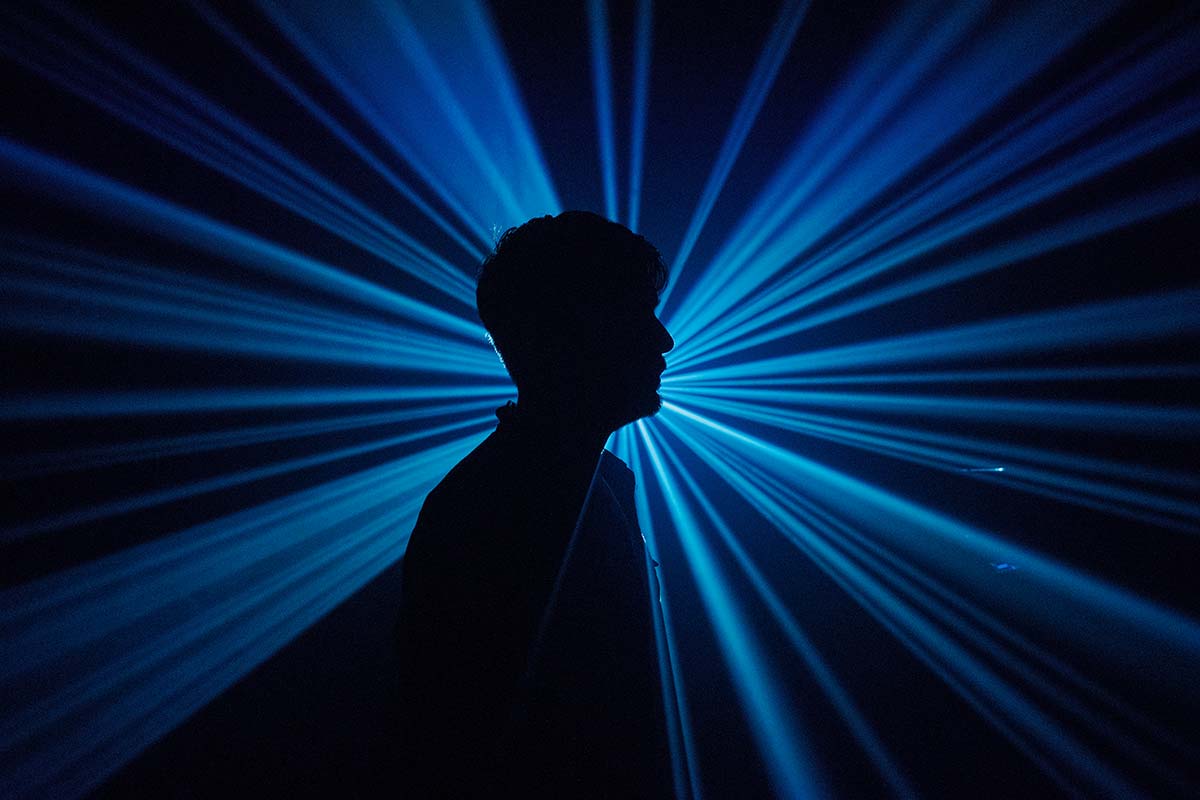
Still looking for the right watch? You might find it here at Jaeger-LeCoultre or in our selection of the most beautiful bling bling or gold watches.
Teaser photo and photos: © Jaeger-LeCoultre


